Cutthroat trout are prominent feature of the Western fly fishing world. They’re the subject of massive conservation efforts, with restoration work happening from Soda Butte Creek in Yellowstone to tiny headwater streams in Colorado. These days, most anglers are aware of the cutthroat, and a good majority understand why they’re so important to Western fisheries.
But did you know there’s a subspecies of cutthroat trout that doesn’t have any spots? Or that the Rio Grande cutthroat was likely the first cutthroat seen by early European explorers here in America? Despite their relevance, there’s a lot most folks don’t know about the cutthroat trout.
There are 10 major subspecies of cutthroat currently in existence in North America, each with their own interesting facts, specific challenges and a unique story to tell.

Lahontan cutthroat trout
Native range: Eastern California/Western Nevada
The Lahontan is perhaps the most famous of all cutthroat subspecies. Pushed very nearly to the brink of extinction, Lahontans have made an epic comeback in recent years.
John C. Freemont, when he first glimpsed these incredible fish in 1844, called them “salmon trout,” due to their size and appearance while spawning in the Truckee River. For the next 100 years, Lahontan cutthroat played a major part in the lives of countless Americans. According to the New York Times, nearly 1,000,000 pounds of Lahontans were harvested annually from the lake to feed the West’s booming population. These fish grew to massive sizes, and the world-record cutthroat is a 41-pound Lahontan caught from Pyramid Lake back in 1925. Rumors flew of fish even larger than that.
Eventually, human interference, pollution, and overharvest killed these fish. By the mid-1940s, the strain of Lahontans that grew so exceptionally large in Pyramid Lake were no more.
Other populations of Lahontan cutthroat trout existed, and still do, but they were genetically different than the Pyramid Lake strain. These other Lahontans were largely adapted to river life, and when they were stocked back into Pyramid Lake in the 70s, they didn’t grow into the monster cutthroat of old. With the extinction of the pure Pyramid Lake strain Lahontan cutthroat, it seemed that America had lost a truly legendary trout.
Then, in the late 1970s, a discovery was made that is nothing short of a miracle. On Pilot Peak, a remote and rugged mountain on the Utah-Nevada border, some biologists discovered what they thought were pure Pyramid Lake strain Lahontan cutthroat trout. Genetic testing performed on these new “Pilot Peak” cutts and old skin mounts of Lahontan cutthroat trout from the early 1900s confirmed that the two fish were indeed the exact same species. After investigation, it was discovered that, circa 1900, a sheep farmer decided to plant Pilot Peak's creeks with Lahontan cutthroat, but made no official public record of doing so.
The United States Fish and Game department began rearing these pure Lahontans in hatcheries, and in 2006 they were stocked into Pyramid Lake. For the first time in over 60 years, the Lahontans were home. A legendary trout was saved by a sheep farmer.
Most anglers today are familiar with the massive cutthroat caught each year from Pyramid Lake, but the story of how these fish got there in the first place is just as impressive as catching a big one.

Colorado River cutthroat trout
Native range: Colorado and Green River basins
The Colorado River cutthroat (CRCT) is the most photogenic of the cutthroat family. Known for brilliant colorations, the CRCT is easily the most recognizable cutthroat.
Despite it’s incredible appearance, the CRCT is in trouble. According to westerntrout.org, it’s estimated that the CRCT occupies less than 1% of its native historic range. And if the Center for Biological Diversity is to be believed, only 1% of the current CRCT population is genetically pure. Hybridization with other cutthroat subspecies and the nonnative rainbow trout have left the CRCT in genetic trouble.
Threats face the CRCT in many forms, most notably land development and the introduction of brook, brown, and rainbow trout to waters that historically housed these native cutthroat. Given the sheer magnitude of the land that is included in the Colorado and Green River basins, it’s astounding how little of their native land the CRCT swims in today.
However, all hope is not lost for this flamboyantly colored trout. Conservation and restoration efforts are underway in Utah, Wyoming and Colorado. I was able to see these efforts firsthand in July, when I followed some Utah biologists along to sample streams in the Uinta Mountains for CRCT populations. The CRCT was abundant in the streams we sampled, and it was heartening to see them doing well in their native range.

Bonneville cutthroat trout
Native range: Great Salt Lake tributaries, Great Basin area
The Bonneville, or “Bonny” as us Utahns refer to our state fish, is another widespread cutthroat subspecies. Native to the tributaries of the Great Salt Lake, and other streams in the Great Basin, it has an impressive native range.
The Bonneville is unique in the fact that a very distinct strain of this subspecies exists alongside the native population - the Bear Lake cutthroat.
Bear Lake cutts can be found in Bear Lake, on the Utah - Idaho border, and in Strawberry Reservoir. Strawberry is a good-sized lake that receives more angling pressure than any other body of water in the state of Utah. That’s an admirable feat, considering the crowding you’ll see year round on the Lower and Middle Provo River.
Local legends and fairly trustworthy first hand accounts tell of enormous Bonnies inhabiting the Provo River, back when Mormon settlers first arrived in Utah. The Provo is a major tributary to Utah Lake, which is currently a giant muddy mess full of carp, bass, pike, and catfish. In the 1850s, however, Utah Lake was a pristine body of freshwater home to cutthroat trout that were rumored to reach 40 pounds — nearly as large as their Lahontan cousins.
Bonneville cutthroat are doing fairly well in Utah, but still face the dangers all trout deal with the world over — habitat loss.

Greenback cutthroat trout
Native range: Headwaters of the Arkansas and South Platte Rivers
The Greenback cutthroat trout are in grave danger. Any angler in the West even vaguely aware of conservation efforts has likely heard of the Greenback, but most anglers don’t know the story of the Greenback and how they became so critically endangered.
According to a very interesting NPR article, Greenbacks were believed to have gone extinct in 1937. However, in the 50s a population of them was discovered in the Arkansas and South Platte drainages, and they were subsequently stocked throughout Colorado.
Unfortunately, these fish weren’t actual Greenbacks, but closely related cousins. The only surviving, genetically pure population of Greenback cutthroat trout exists in Bear Creek in Colorado, a tiny stream that flows not far from Colorado Springs.
As irony would have it, Greenbacks aren’t native to Bear Creek. They were transplanted there in the late 1800s by a businessman who was looking to establish fishing ponds along what used to be a popular trail to Pike’s Peak. Through yet another human’s innocent intervention, a second rare trout species was saved.
Currently, it’s estimated that only some 750 Greenbacks remain in the world. Their future is uncertain, and only time will tell if they manage to survive.

Coastal cutthroat trout
Native range: Kenai peninsula, Alaska to the Eel River in California
Coastal cutthroat are a very widespread subspecies, and are the only anadromous member of the cutthroat family. Very similar in appearance to rainbow trout, these fish are the only cutthroats not widely considered to be endangered.
Although they suffer from the same decline of habitat that salmon and steelhead experience, coastal cutthroat are still abundant and caught with frequency.

Paiute cutthroat trout
Native range: Silver King Creek, California
The Paiute cutthroat trout is a very distinct subspecies. It’s believed the subspecies came to be when a group of Lahontans in Silver King Creek got separated from the Carson River valley Lahontans, some 8,000 years ago. During this time, the Silver King basin underwent some major geological changes, and the cutthroat that had migrated into the basin were physically separated from the Carson River valley Lahontans.
In 1912, sheep herders again aided in helping cutthroat trout survive when a group of them transplanted some Paiute cutthroat above a section of Silver King Creek known as Llewellyn Falls. This is important because in 1920, cutthroat, golden, and rainbow trout were stocked below the falls and interbred with the native Paiute population.
After Paiute cutthroat were scientifically identified, fishing was banned on Silver King Creek above Llewellyn Falls in order to protect the precarious population of these spotless cutthroat trout.
The Paiute is most notable because they lack spots on almost all of their body. Some of them will even retain par marks into adulthood.

Rio Grande cutthroat trout
Native range: Northern New Mexico/Southern Colorado
The Rio Grande cutthroat trout was likely the first New World trout to be seen by early American explorers. In 1541, Francisco de Coronado recorded his first glimpses of cutthroat trout in the Pecos River near what is now Santa Fe, New Mexico. It’s very likely that those fish Coronado saw were Rio Grande cutthroat.
Rio Grande cutts are another great success story amongst a species that’s on the decline. As of October 1, 2014 they are no longer a candidate for protection under the Endangered Species Act. According to the New Mexico Department of Game and Fish, the Rio Grande cutt now inhabits about 700 miles of streams in New Mexico. This is up significantly from 2008, when the fish were only in 11% of the native range.

Westslope cutthroat trout
Native range: Idaho, Montana, and British Columbia
The Westslope cutthroat is another subspecies that has fallen prey to genetic impurity due to cross-breeding with rainbow trout. According to Trout Unlimited 2015 State of the Trout report, "today, westslope cutthroat trout have been extirpated from more than half of their historical habitat. Traditional land uses such as logging, mining, livestock grazing and agriculture have contributed to the loss of habitat for westslope cutthroat trout, while introduced non-native species are displacing them throughout much of their range, even in protected areas."
Numerous conservation plans are in place for Westslope cutts, and the plans largely revolve around maintaining genetic purity within the species. Along with the Colorado River and Yellowstone cutthroats, the Westslope cutt is at a high risk to losing wild, genetically pure populations.

Yellowstone cutthroat trout
Native range: Yellowstone Lake, Yellowstone River, Upstream of Shoshone Falls on the Snake River in Wyoming, tributaries to the Tongue River in Montana
The Yellowstone cutthroat trout has had some close calls of late. The illegally introduced mackinaw in Yellowstone Lake have decimated the Yellowstone cutthroat populations, in addition to making life harder for ospreys and bears. Fewer native cutthroat in the parks streams means less food for the predators, and the ecosystem as a whole suffers.
Massive netting efforts have been underway to remove lake trout from Yellowstone and Heart lakes, and as of 2013, nearly 1,000,000 mackinaw had been harvested to help reduce the threat on Yellowstone cutthroat.
Other populations of these unique cutthroat exist outside of their native ranges, which will help preserve the genetic purity of the subspecies if the population inside Yellowstone doesn’t manage to make it in the coming years.

Snake River cutthroat
Native range: Snake River
The Snake River fine-spotted cutthroat trout is an interesting fish. It’s the only one of the cutthroat listed here that hasn’t been definitively defined as a separate subspecies. According to Forest Service documents, no conclusion has been reached on whether Snake River fine-spotted cutthroat trout should be considered a distinct subspecies. Currently, it’s held that Snake River cutts are simply a variety, or strain, of Yellowstone Cutthroat trout.
Regardless, they’re beautiful fish and abundant in the Snake and Gros Ventre Rivers near Jackson, Wyoming.
While not known for being particularly wily or difficult to catch, cutthroat are iconic fish that are symbolic of our country's angling heritage. Even more importantly, they play a part in a healthy Western ecosystem. While cutthroat are still in danger, their collective future is looking bright as numerous conservation efforts are continue their efforts across the cutthroat's native habitat.




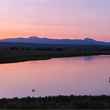
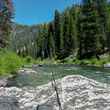
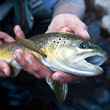




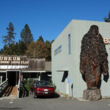










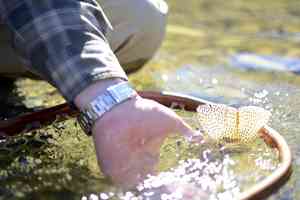





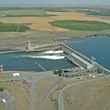
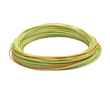
Comments
Nathaniel Bergman replied on Permalink
Unfortunately, fishermen are partly responsible for the endangerment of native cuts. Numerous stocking programs of non-native hatchery fish are prominent in many rivers of the west, including by local groups, government agencies and TU, and these come on the expense of the native fish. In many cases the efforts are not coordinated and each organization "promotes" its own agenda. That's why we can see 3-4 types of trout in one blue ribbon river and there is no incentive to get rid of the non-natives. "It is great fishing" or fishermen are asked to kill non-natives and they don't. The Logan River in N. Utah is a good example. Cuts and brookies are the natives but browns, rainbows and even albino rainbows are prevalent besides the upper reaches of the canyon.
Phil replied on Permalink
That photo of the Bonny is either a hybrid or full fledged bow... Great read. Keep it up.
Spencer Durrant replied on Permalink
Nah, that's a Bonny. Telling cutts and bows apart can be tricky, though.
Thanks, I'm glad you enjoyed the article!
Spencer Durrant replied on Permalink
Brook trout aren't native to the Logan River. They're not native to the west, they're ancestral home is the East Coast. But they're so widespread these days it can feel like they're native.
Most Wildlife Biologists and TU folks I know and talk to regularly are all-in on bring back natives - the issue is with resources and, yes, the general fishing population. It's a tricky balance to achieve, and I don't envy the guys who have to figure it out.
Nathaniel Bergman replied on Permalink
I know. Brookies are east coast fish but at least they don't posses aggression like rainbows and browns that decimate the cuts. So if any fish is "tolerated" in the west as "naturalized" it should be them not the latter two.
Shane replied on Permalink
That's a strange double standard. Brook Trout often over populate and compete with Cutties. Not to mention hybridize with Native Bull Trout populations.
Les Bouck replied on Permalink
Westies are also native to central Washington State.
Pages